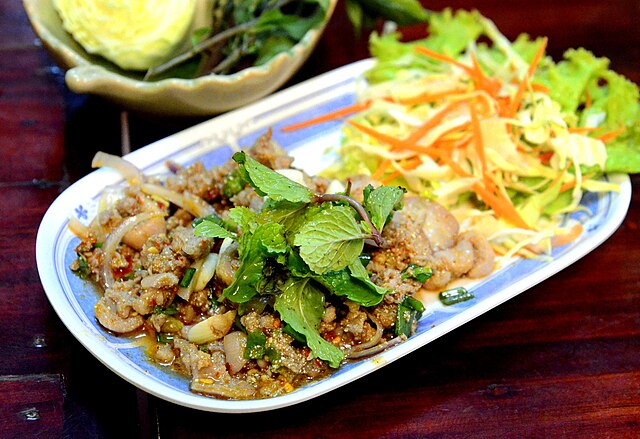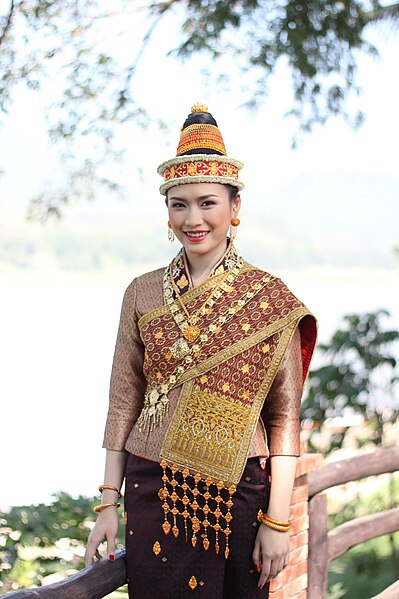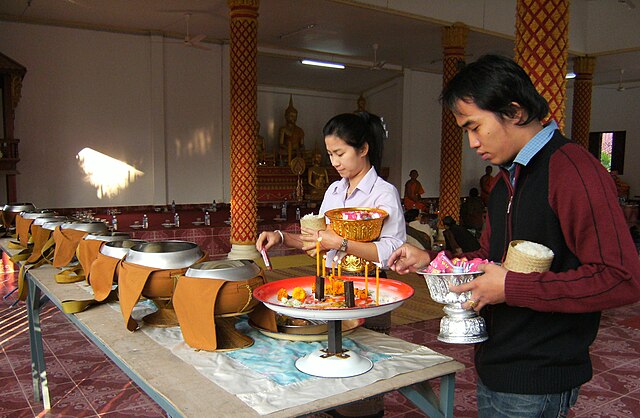Laab / Larb is a type of Lao meat salad that is the national dish of Laos, along with green papaya salad and sticky rice. Laab in the Lao language is a noun that refers to meat or other flesh that has been finely chopped and pounded. It is also considered a food of good luck in both Laos and Thailand because it has homonyms that mean 'lucky' in both languages, derived from लाभ in Sanskrit. Laab is of Lao origin, but is also eaten in other regions, most prominently the neighboring former Lan Xang territory, or modern day Laos and the northeastern and northern areas of Thailand, Isan and Lanna where the Lao have extended their influence. Other local variants of laab also feature in the cuisines of the Tai peoples of Shan State, Burma, and Yunnan Province, China.
Larb made with cooked beef in Vientiane, Laos
A Lao-style larb ped (with duck) in Chiang Mai
Larb khua mu, a stir-fried northern Thai larb made with pork, in Chiang Mai
Lao bile laab (laab Pia in Lao) made with cooked meat, tripes, and bile
The Lao people are a Tai ethnic group native to Southeast Asia, who speak the Lao language of the Kra–Dai languages. They are the majority ethnic group of Laos, making up 53.2% of the total population. The majority of Lao people adhere to Theravada Buddhism. They are closely related to other Tai people, especially with the Isan people, who are also speakers of Lao language, native to neighboring Thailand.
A Lao woman wearing traditional clothing in Luang Prabang, Laos
The French forced the Siamese to renounce their claims to Lao territory in 1893, thus signalling the genesis of the modern Lao state.
Offering of food to monks to make merit at a temple in Vientiane
A spirit house near Wat Kham Chanot, Udon Thani Province, Thailand








